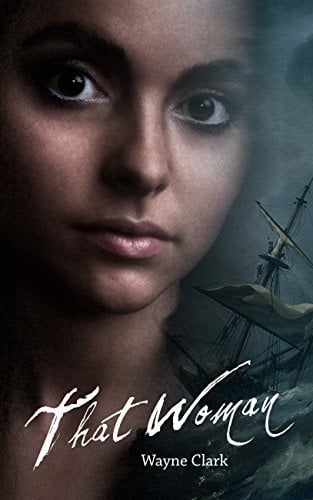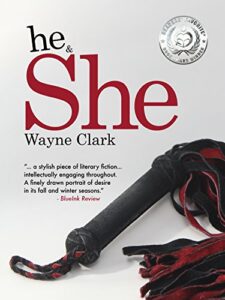
Following find an interview with author Wayne Clark.
The title is That Woman: Beating the odds in colonial New York. It was published in the spring of 2017.
What’s the book’s first line?
“LISTEN,” Gabriel Da Silva told his two children, Sarah and Jacob, “listen well because I am preparing you for life.”
What’s the book about? Give us the “pitch”.
A young woman takes on the brutal merchant king of New York’s East River waterfront—and wins.
Illness suddenly deprives 17-year-old Sarah Da Silva and her older brother Jacob of a mother. Before Sarah has come to terms with that loss, her merchant father grows frail and increasingly desperate in the face of impending bankruptcy. On the rainy night their father scours the docks of Bordeaux, France, to make his final bid to save his family, his children are kidnapped and forced onto a ship bound for New York City where they’ll be separated and sold to the highest bidder as indentured labor.
Purchased by a grotesque merchant whose wealth, backed by a team of henchmen, allows him to dominate the chaotic East River docks, Sarah strikes back the only way she can. Vowing to never allow him to put his hands on her again, she presses a knife to his fat neck. She demands her freedom, a roof over her head and the means to start a business. Her leverage? Knowledge obtained on the voyage that would bring the big man to his knees forever. He yields to her demands but privately swears to become her worst nightmare.
What inspired you to write the book? A particular person? An event?
That requires a two-part answer. I’ve always been interested in history. In the 1990s I spent several years researching a novel set in the days of New France. The problem was that I over-researched it. More accurately, I over-planned it. I blocked out virtually every scene from beginning to end. When it came time to write, I realized the book had died for me. There was no longer any discovery possible in writing process that I was embarking on.
I realize now that the experience led to a major discovery for me as a writer. That Woman, and my 2013 literary fiction novel he & She, were to a considerable extent improvised. Some time after publishing he & She I returned to the idea of writing a historical novel of some sort.
My first thought was a pirate novel. I thought I would have fun doing that. I’d read tons of pirate and Age of Sail novels and I wanted to write one, too. But for no known reason, an image of That Woman began to take form in my mind, the woman, not the book. Eventually she had a brother, a father and a link to the sea, the port of Bordeaux, France. I carried the images in my head, along with occasional notes in my journal, for about a year before starting to write. During that time I did a great deal of reading, both fiction and history, about the time period and the locations for the story. So, yes, when I started writing I had an idea where I was going, but at the outset I still had no more than three or four characters with actual faces in my head. At first I just wanted to put them in a scene and make them move about. I wrote scene by scene and trusted my imagination to lead me to the next one, sort of like someone helping a blind man cross the street. Obviously, the further I got into the story, the more readily future scenes occurred almost full blown.
So the answer to your question is either that I always wanted to write a historical novel or that this young French woman walked into my imagination and took root.
What’s the main reason someone should really read this book?
Because, blush, it’s a really good story. Secondly, Sarah, the main character, conquered incredible odds to survive in a man’s world. There’s an undersupply of novels with strong female characters. Beyond that, the book presents an intimate look at the early years of what became arguably the most interesting city on Earth, New York.
What’s the most distinctive thing about the main character? Who-real or fictional-would you say the character reminds you of?
Force of character, which includes her will to survive against all odds.
As for who Sarah reminds me of, until you posed the question the answer would have been nobody in particular. But the instant you asked it a movie came to mind about an incredibly courageous woman from Africa, from Somalia. She was a nomad who’d fled her country and the man she’d been forced to marry while only a girl. The movie was called Desert Flower and it was based on a real story. I’ve forgotten her name, but this young woman went on to become a United Nations spokeswoman fighting against the practice of genital mutilation. A powerful story.
When did you first decide to become an author?
It was something I dreamed of being when I was a teenager. When I was a young man, I tried to write a number of novels, four I think, which I either didn’t finish or ended up hating when I did complete them. I also tried my hand briefly at playwriting. Publishing he & She in 2013 was my Bucket List moment. My most recent novel, That Woman, is icing on the cake. For the past several months I’ve been working on another novel.
What do you do for work when you’re not writing?
I spent most of my career as a journalist. I also worked a while as an advertising copywriter. For the past 12 or so years I’ve worked as a freelance translator.
Would you go traditional if a publisher came calling? If so, why?
I would but only if I was convinced they could get me a lot more readers. Vain perhaps, but I think this book deserves a big readership.

